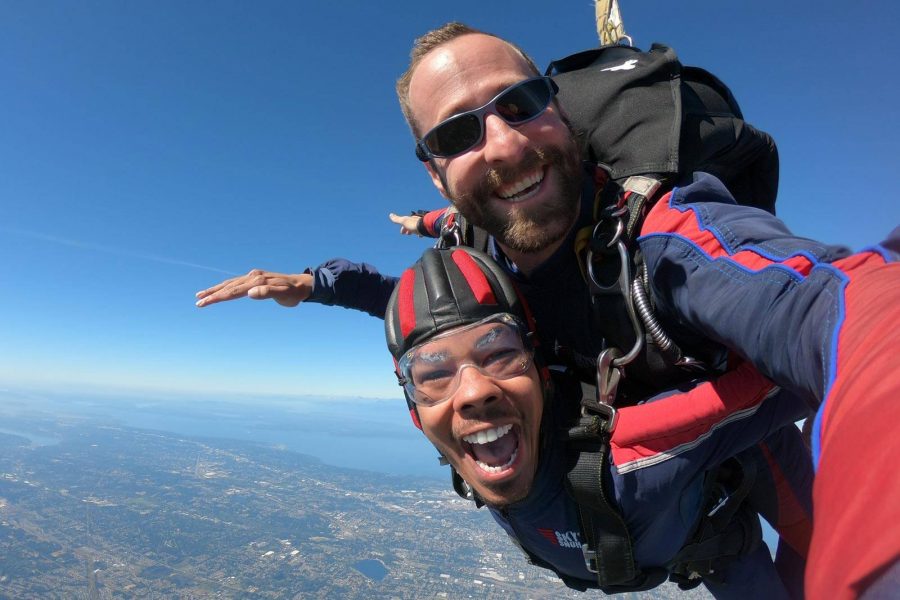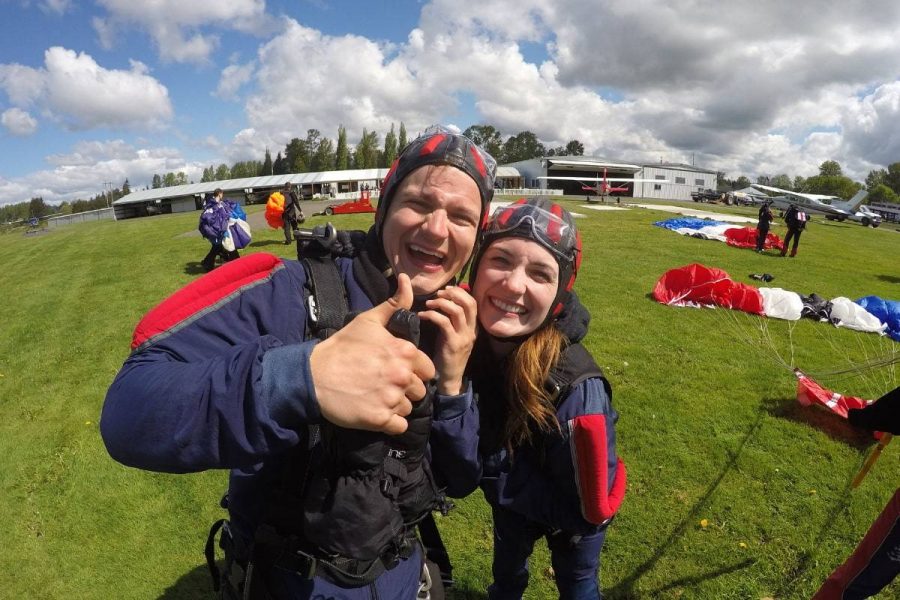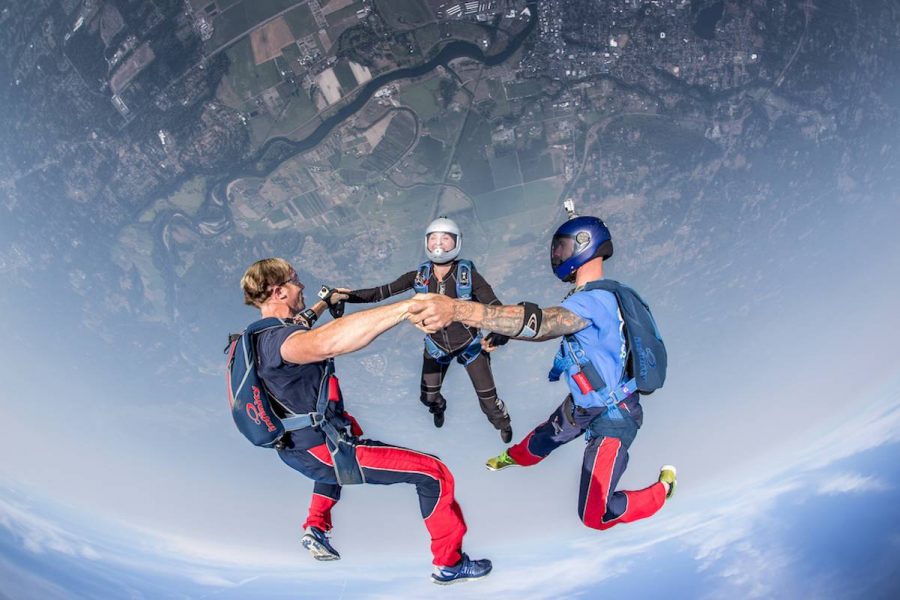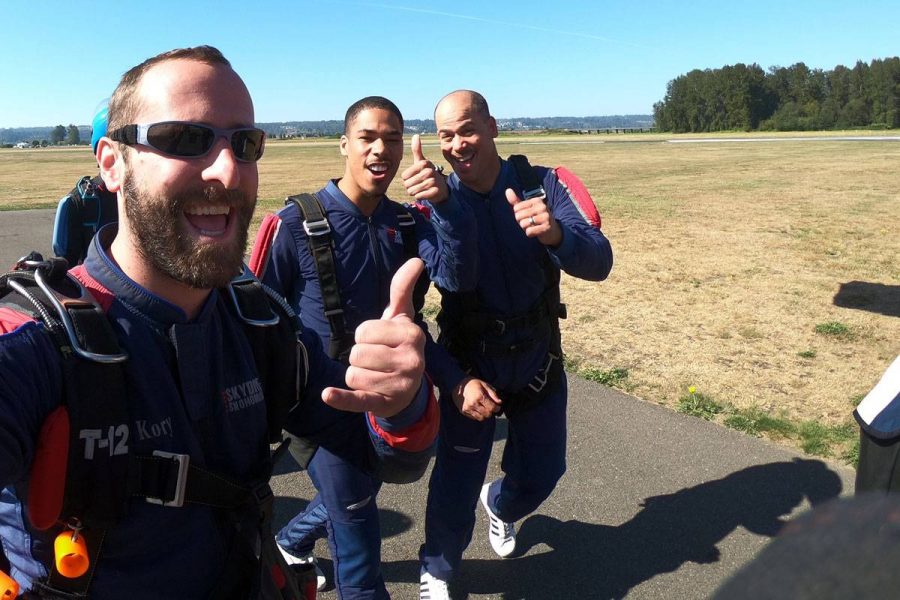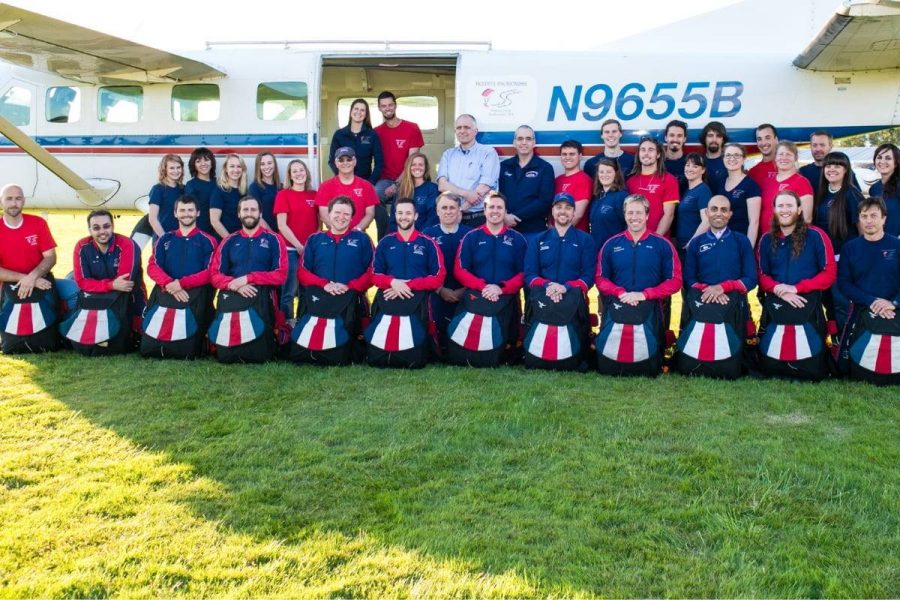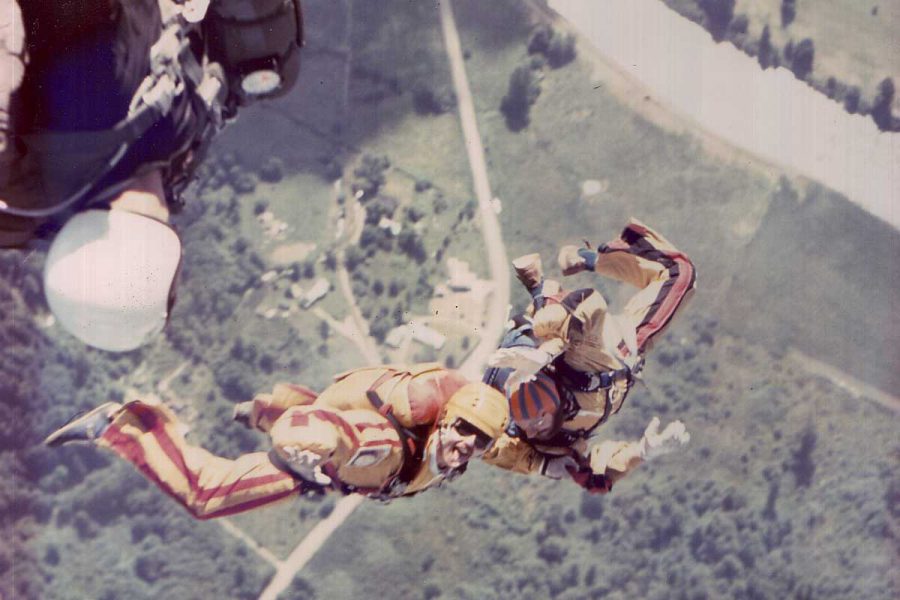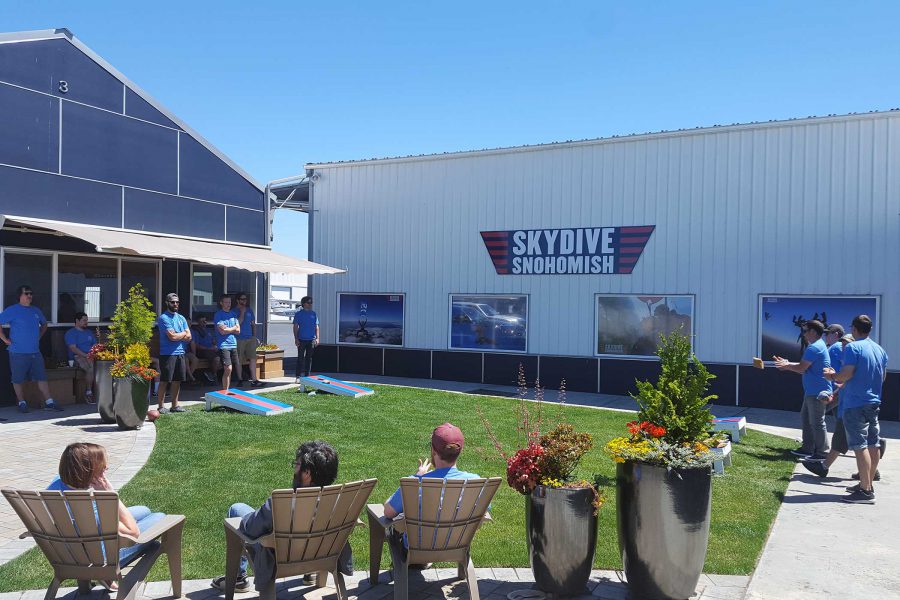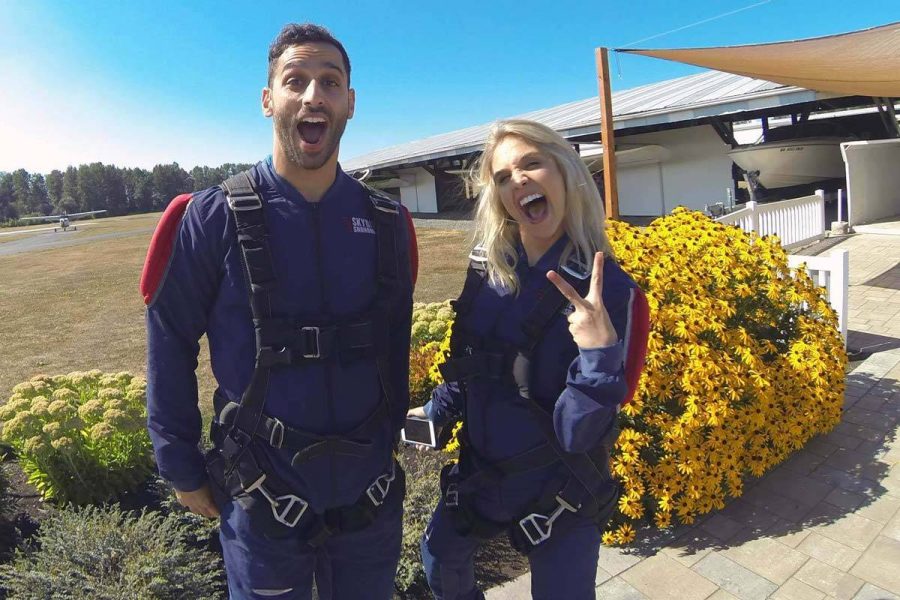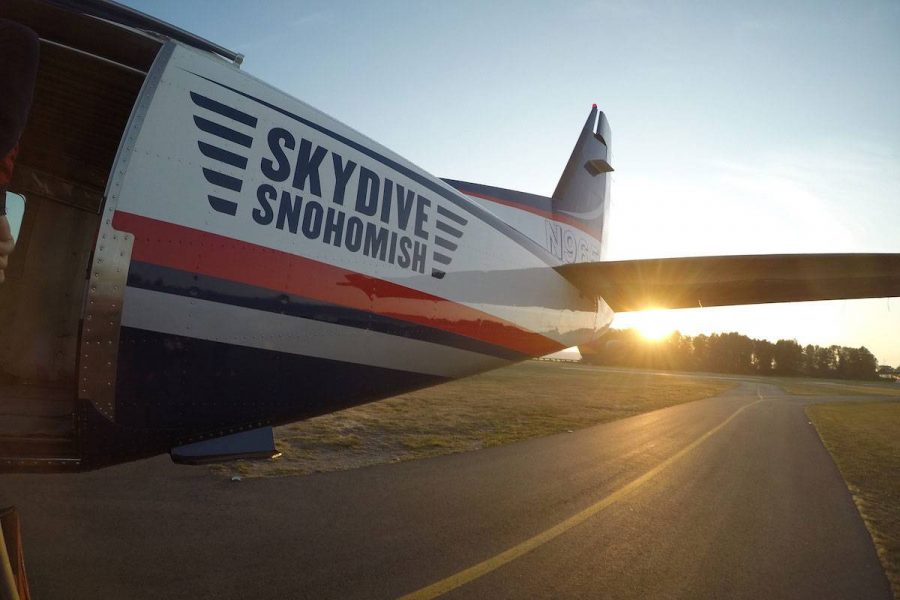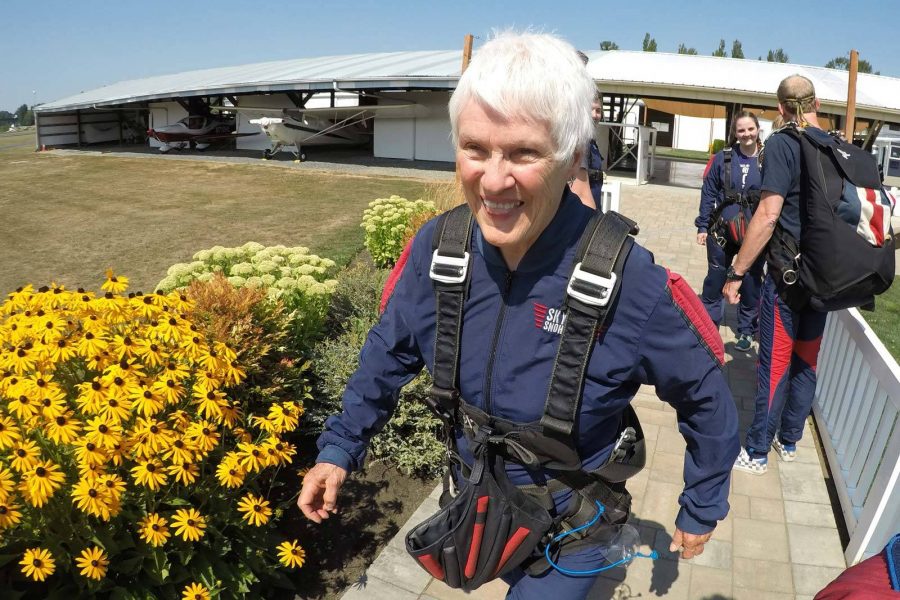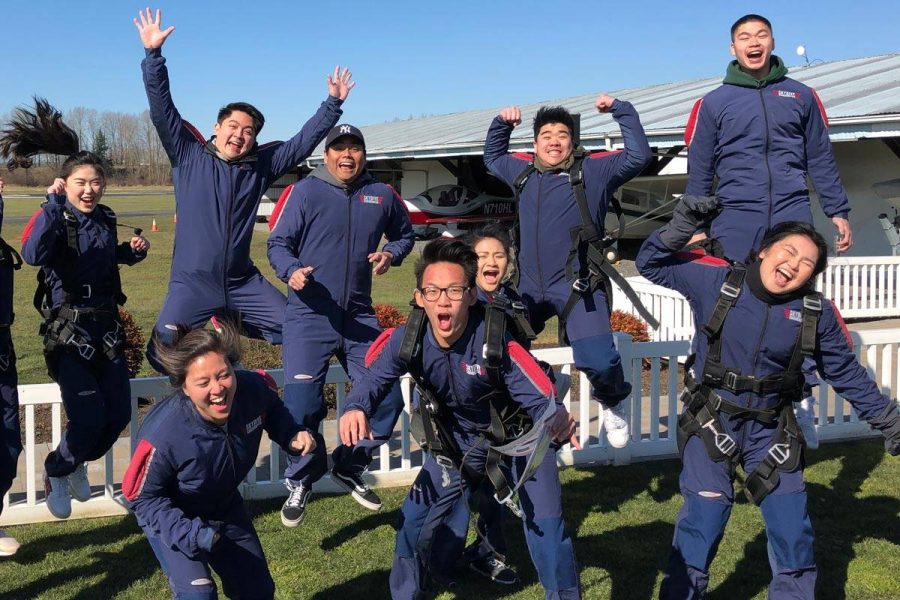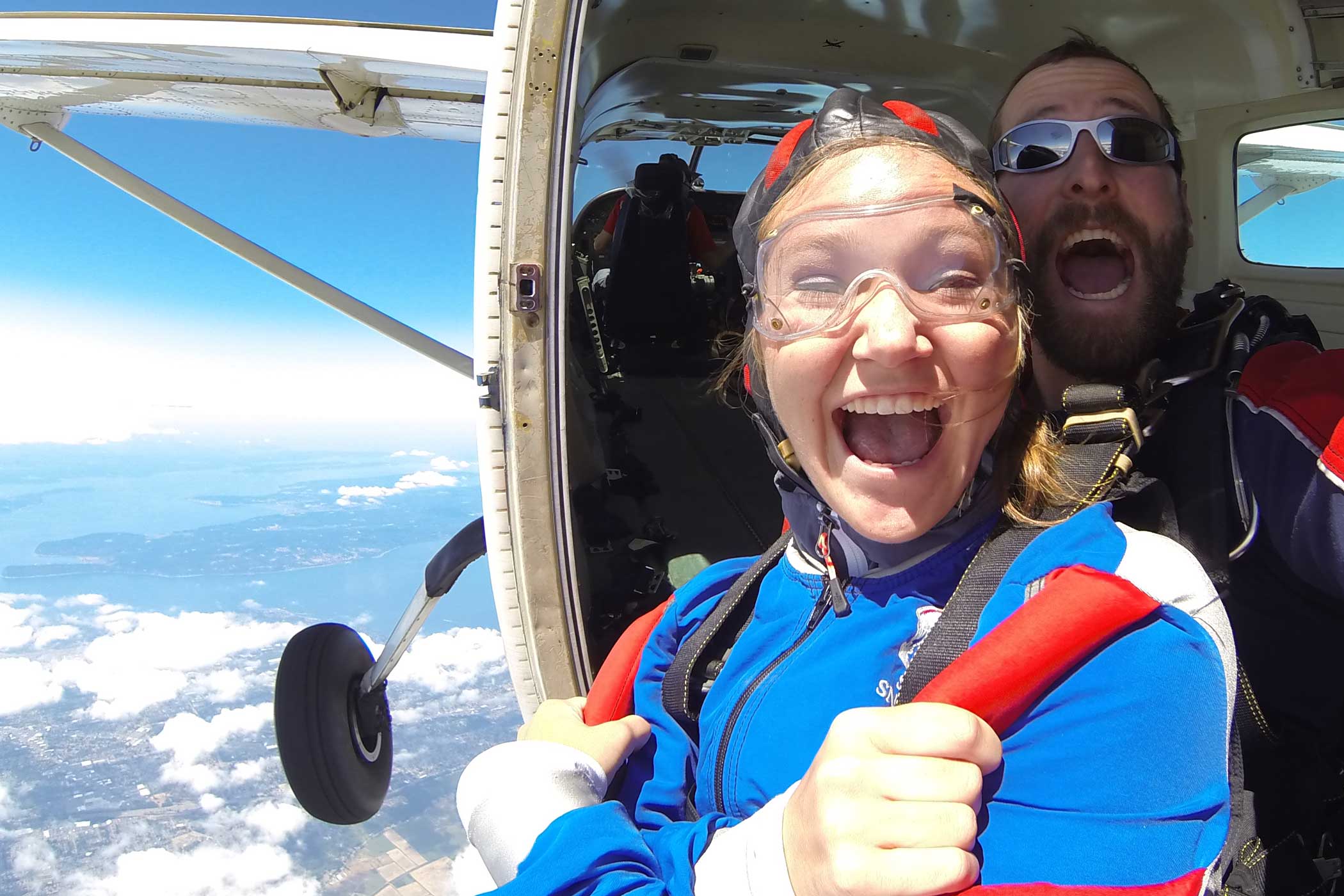How hard can it really be to learn to skydive? After all, it’s just falling – people do that all the time without even trying!
There is, of course, slightly more to skydiving than simply falling. But the existence of skydiving schools makes learning how to skydive quite accessible! Earning your skydiving license doesn’t have to be the scariest thing you’ve ever done. Qualified instructors work with you at your own pace to help make the whole process enjoyable.
Skydiving training methods have evolved over the years to become more inclusive, safe, and available to a wider range of people. Comprehensive learning programs deliver knowledge and skills to new skydivers in a way that is tailored to each learner and prepares every student for success in their skydiving journey.
So if you’re wondering, “Is skydiving hard to learn?” read on to find out just how easy it can be!
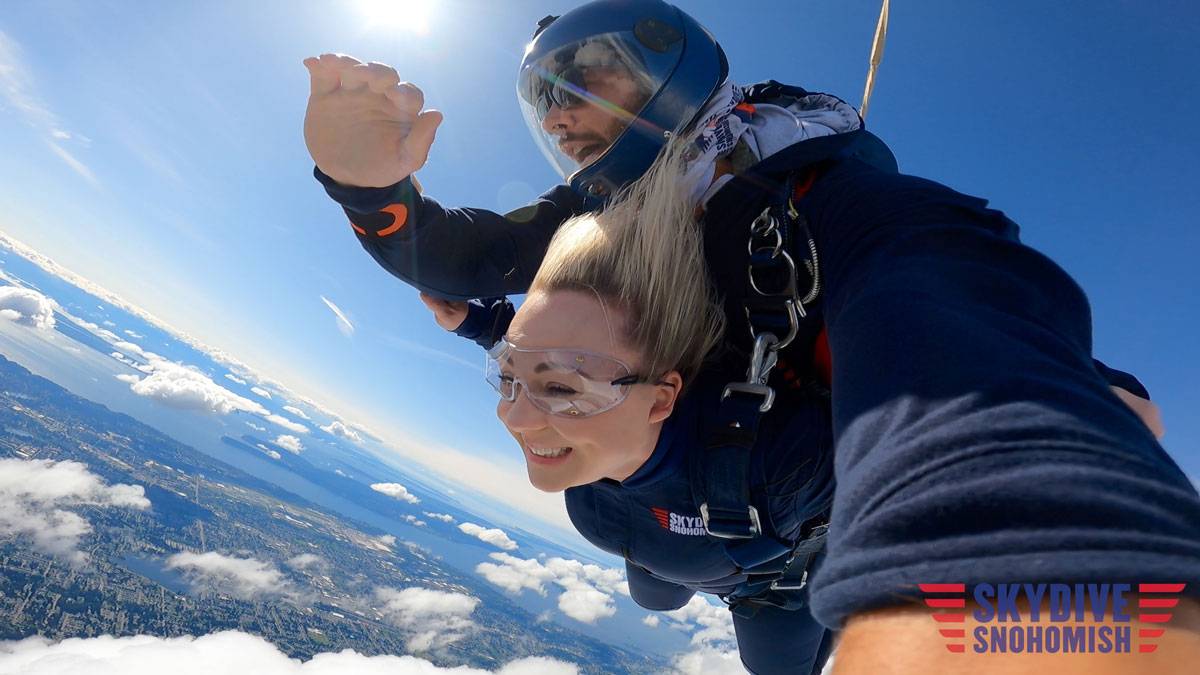
It All Starts With a Tandem Skydive
A tandem skydive is the best … and safest … way to get your feet wet (or your toes breezy, in this case) in the world of skydiving. The security of having a highly experienced instructor strapped to your back takes a lot of the stress out of jumping out of an airplane for the first time. And having someone to take care of all the controls means you can spend the jump enjoying a constellation of new sensations, acclimating to the sensory overload, and getting a taste for what’s involved with the disparate parts of a skydive.
How scary is skydiving the first time? It’s all relative – only you can answer that after you land! Jumping out of an airplane comes with a lot of new sights and sounds. And, you won’t believe what skydiving feels like! It’s really like nothing else you’ve ever done, so your brain and body need time to adjust to the environment. Your tandem instructor can help guide you through the process every step of the way.
- Before the jump: A lot goes into planning a safe skydive – including studying the weather ahead of boarding the plane. Carefully navigating the inside of the airplane, knowing when to exit and when to pull the parachute, and deciding where to land, all require informed decision-making. Having a tandem instructor there with you to make all of these decisions will ease you into understanding the science behind skydiving over time.
- Freefall: Gracefully falling through the air at 120 mph takes a bit of practice. It would be silly to think that someone would nail a stable body position on their own on their very first jump. Tandem instructors have extensive training in helping to control both themselves and their passengers to ensure a safe skydive. They can use a mixture of compensating their body flight and gently repositioning yours to keep the both of you flying like pros. It’s like having in-air training wheels!
- After the parachute opens: Being able to interact with an instructor and see how a parachute flies in real-time is one of the most valuable benefits of starting with a tandem skydive. It’s the only part of the jump that an instructor can’t be there for once you start going solo, so soaking up this on-the-jump training pays dividends later on!
And, if you’re wondering “Is skydiving safe?“, don’t worry, our safety record is recognized throughout the industry. There are other benefits to tandem skydiving that go above and beyond the learning process, too. Skydiving is a huge time and financial commitment (as we’ll talk about later), and having the opportunity to try-before-you-buy will help you feel good about deciding to pursue a skydiving license.
Going Skydiving Solo
This is where it starts to get real. Making a tandem skydive is one thing, but jumping out of the plane on your own?? That’s a whole other level of extreme. So, can a beginner skydive? Yes!
In reality, you aren’t technically alone for your first solo skydive. The next step after completing your training tandem is to enroll in an Accelerated Freefall (AFF) Program. AFF jumps involve exiting the airplane with your own parachute and one or two (depending on the jump) instructors by your side.
The instructor(s) who come with you on your AFF jumps are there to ensure your safety, guide your progression, and give you a little more freedom with each passing level until you’re flying free! AFF programs are designed to help you gain confidence in the air by building up your knowledge and skills little by little until, before you know it, you’re ready to do a TRUE solo jump.
AFF programs aren’t exclusive to in-air learning. There is plenty of instruction on the ground that gets you ready to responsibly perform in the air. Understanding body position, movement, canopy flight, emergency procedures, and calculating wind drift are just some of the skills gained by completing AFF.
You might be thinking, “This sounds like a lot of work … how long does it take to prepare for skydiving?” Well, another great thing about AFF is that it’s completely self-paced. There’s no pressure to fly through the levels – although, nothing is holding you back from progressing as quickly as you’re able. You learn at your own pace, and your instructors meet you where you are. Taking the curriculum in chunks also allows you to spread out program tuition too.
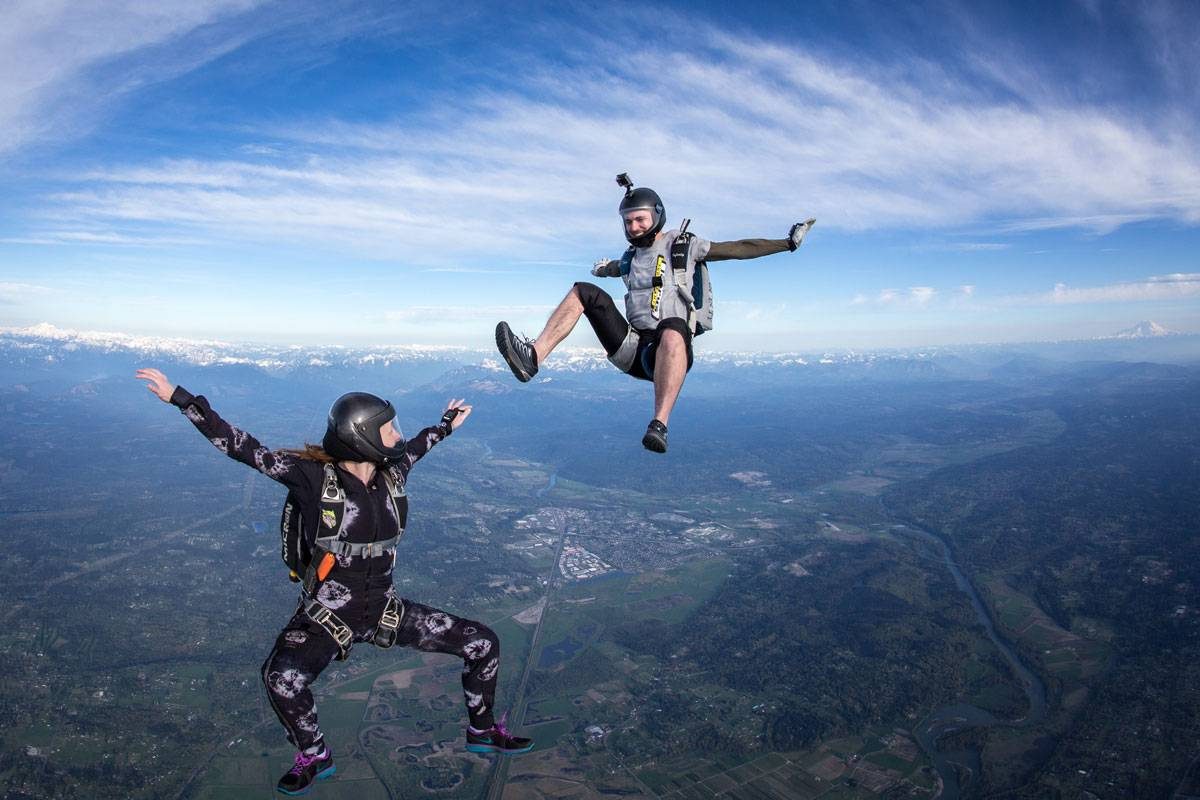
Making the Commitment
Physical ability isn’t the only thing to consider when thinking about learning to skydive. Another hurdle to overcome is the time and money it takes to participate in the sport. For some people, that might even be the hardest part of learning to skydive.
First, let’s look at time. To be a competent and confident skydiver, you need to be able to jump regularly. This is called “staying current.” The autonomy that comes with a skydiving license also comes with mandatory responsibilities. If you don’t stay current, you have to complete recurrency training. Skydiving can be high-stress and is always fast-paced – your brain needs to stay trained on best practices for all types of situations. And the best way to do that is to jump regularly and stay comfortable in the air. Especially while you’re first learning how to skydive.
More than anything, the costs just to get started in skydiving stop people from completing AFF and earning their United States Parachute Association (USPA) A License. All told, AFF programs typically run between $3,000 and $4,000, including:
- Jump prices
- Instructor fees
- Gear rental
Some of these expenses don’t go away … and then there’s the cost of gear and gear maintenance if you decide to stop renting, new skills to learn, and phenomenal places you yearn to travel to skydive.
But there’s good news on the financial front too – once you’re licensed to fly, your per-jump cost goes way down. At Skydive Snohomish, lift tickets to 10,000 to 13,000 feet are right around $30, and gear rental (if you need it) is around $30 too.
So if you’re ready to take the leap, both literally and figuratively, come make your first tandem and experience the glory of human flight! Blue skies.
